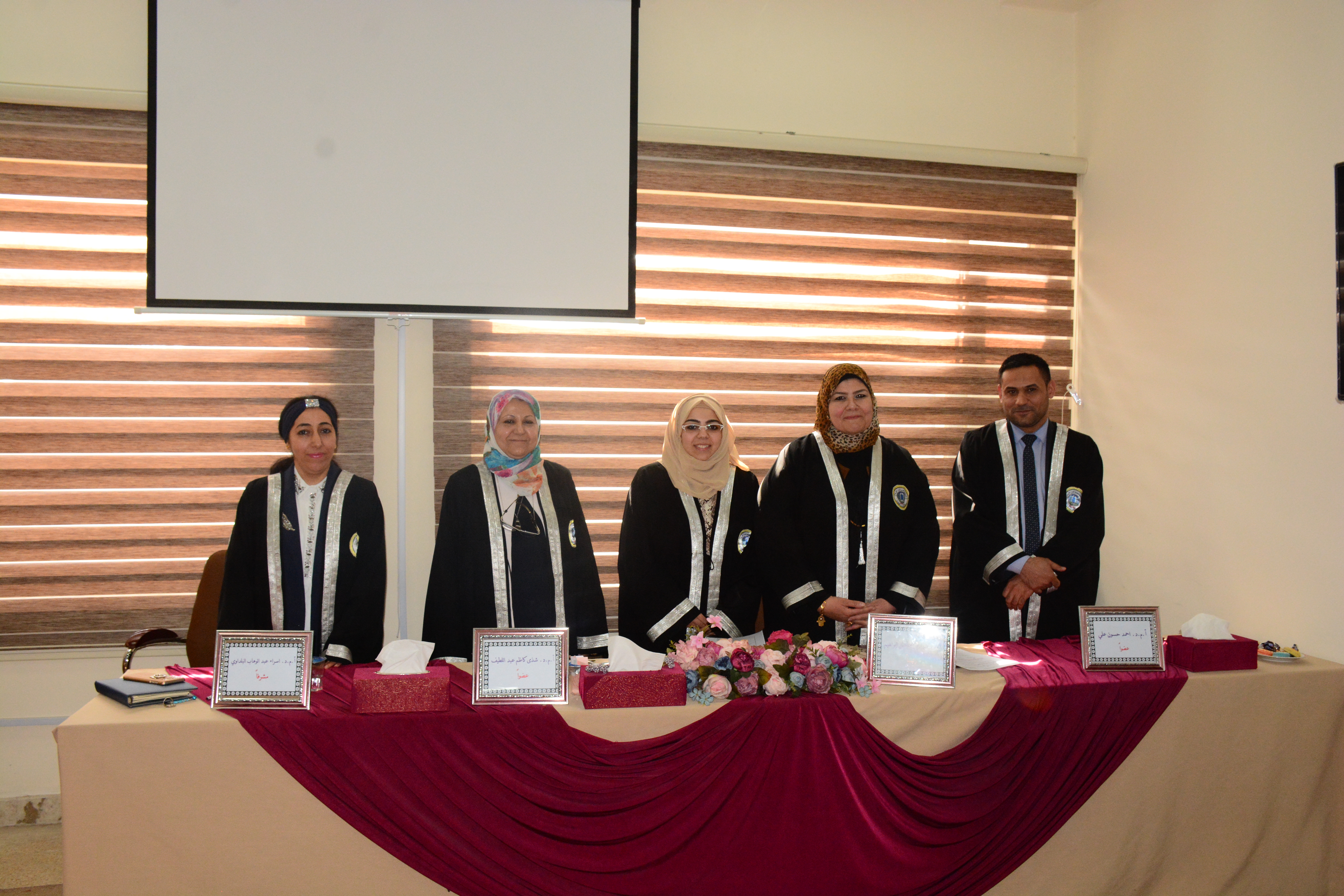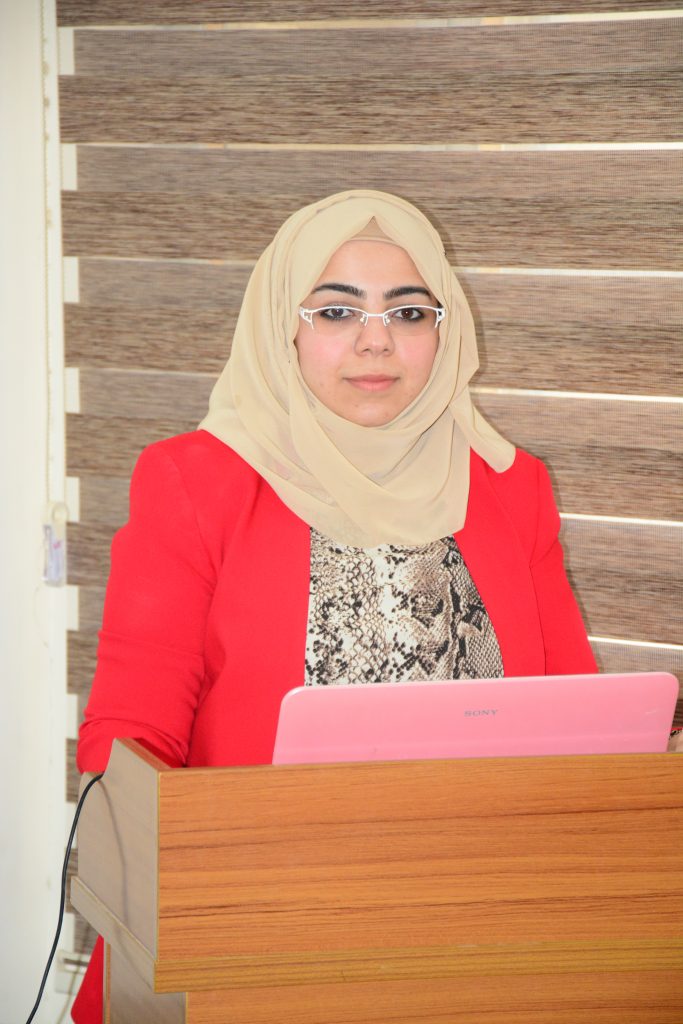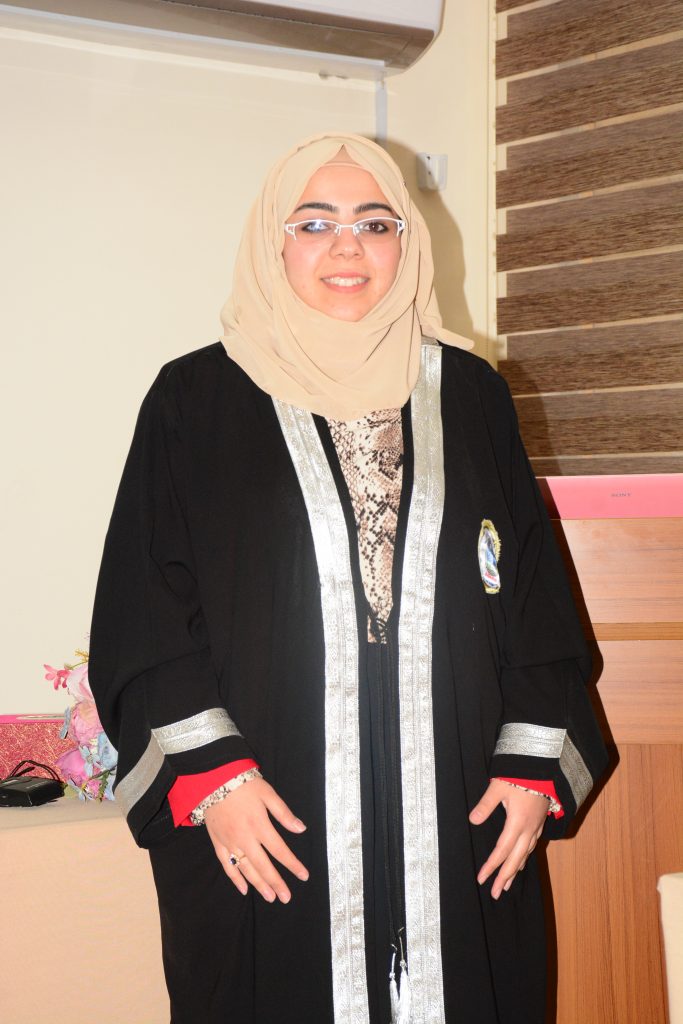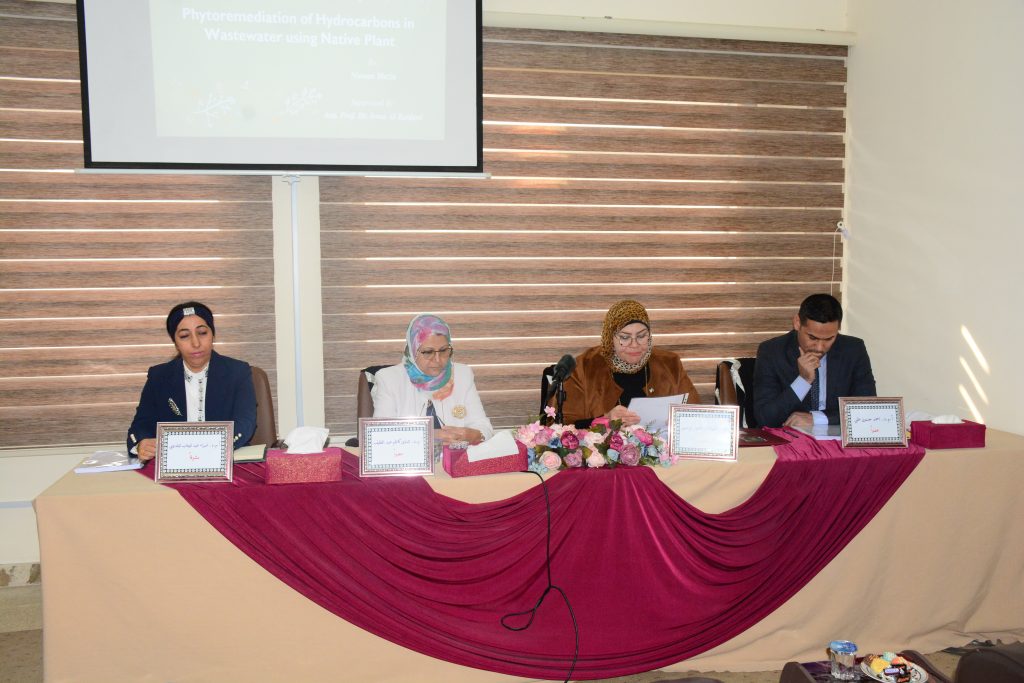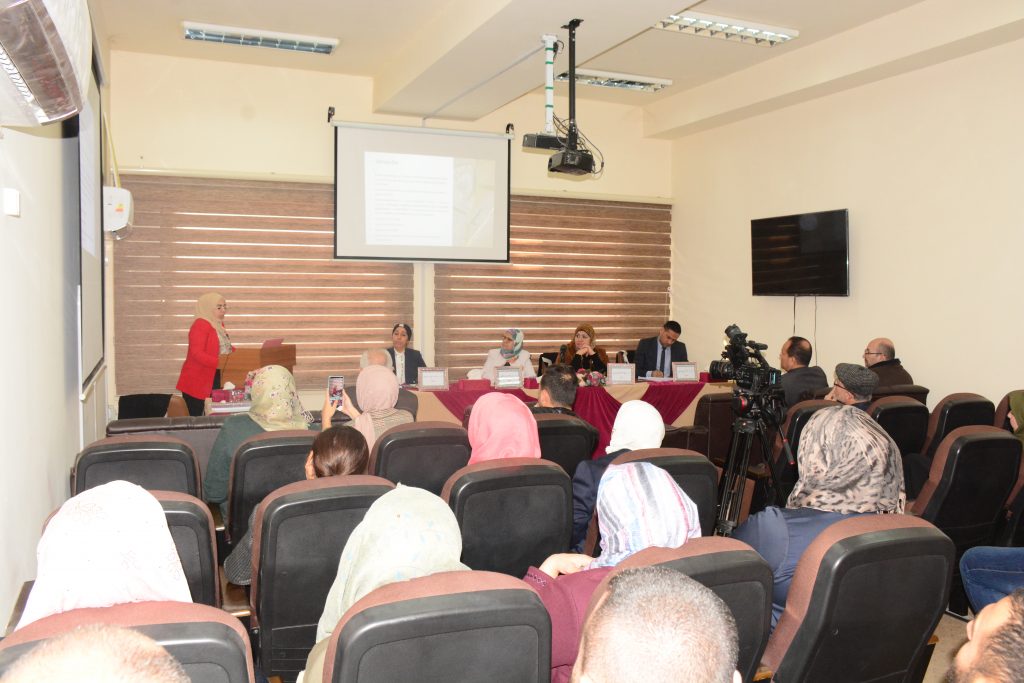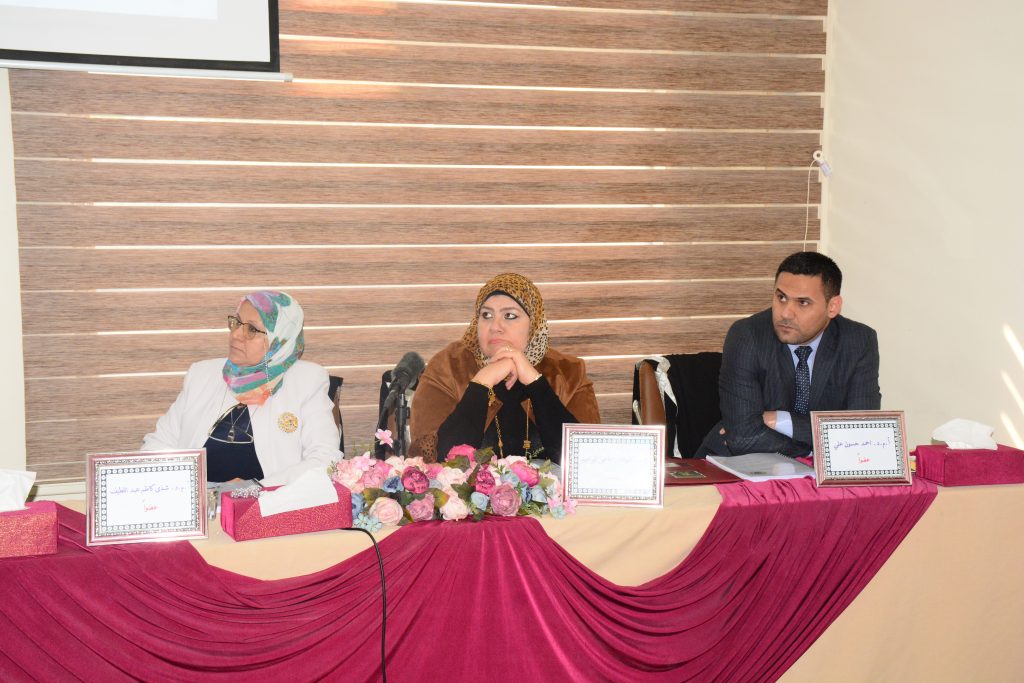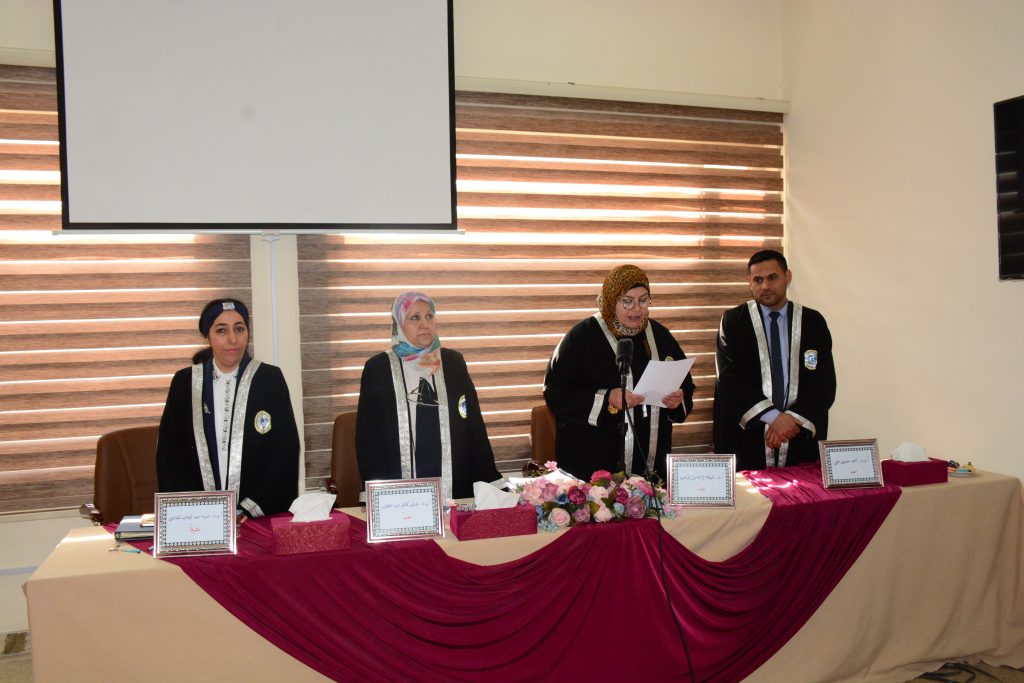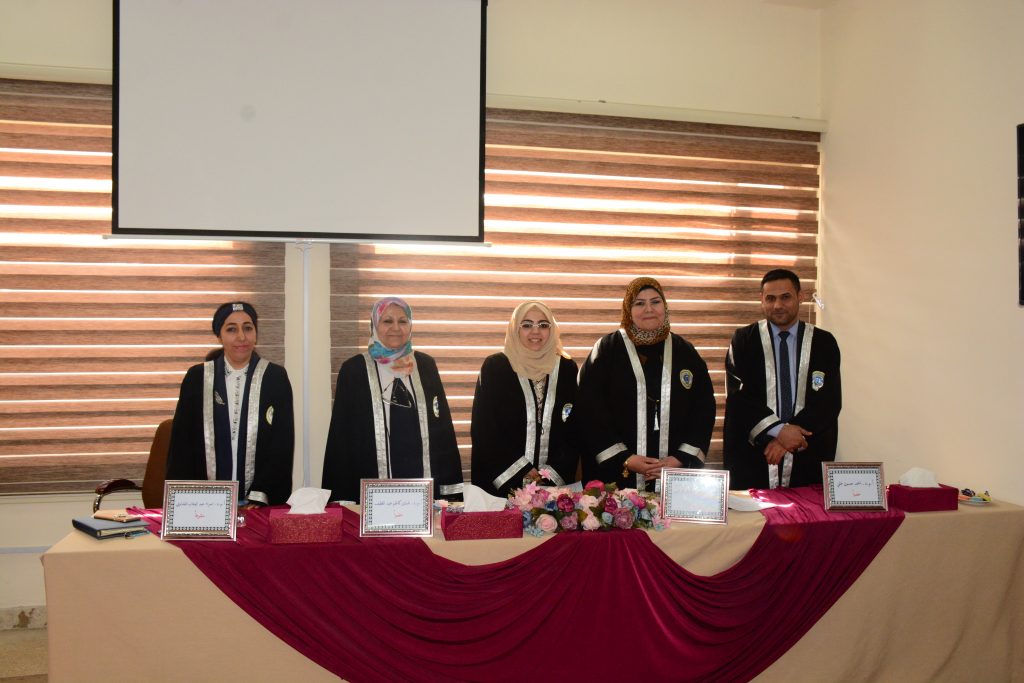نوقشت رسالة الماجستير للطالبة نسرين مازن فاضل في قسم الهندسة الكيميائية الاحيائية الموسومة:
المعالجة النباتية للماء الملوث بالهيدروكاربونات بأستخدام نباتات محلية
بإشراف أ. م. د. إسراء عبد الوهاب حمودي / جامعة بغداد / كلية الهندسة الخوارزمي / قسم الهندسة الكيميائية الاحيائية.
وذلك في يوم الخميس الموافق 21/ 2/ 2019 وفي قاعة مناقشات الدراسات العليا في الكلية.
حيث حصلت الرسالة على تقدير (إمتياز) وكانت اللجنة العلمية للمناقشة برئاسة:
أ. د. شهلاء أسماعيل أبراهيم / كلية الهندسة / جامعة بغداد/ قسم هندسة البيئة،
وعضوية:
أ. م. د. شذى كاظم عبد اللطيف / كلية الهندسة الخوارزمي / قسم الهندسة الكيميائية الاحيائية.
أ. م. د. أحمد حسون علي / الجامعة المستنصرية/ قسم هندسة البيئة.
وقد تضمنت الرسالة بالعنوان أعلاه على أن المياه الملوثة بالهيدروكربونات النفطية مشكلة كبيرة وواسعة الانتشار في البلدان النفطية. وتتبع طرق معالجة هذه الملوثات طرقاً كيميائية فيزيائية ذات كفاءة منخفضة وتكلفة عالية.
المعالجة النباتية (Phytoremediation) هو النظام الذي يستخدم النبات والبكتيريا المرتبطة بها لتعزيز إزالة التلوث من الماء. الأراضي الرطبة المبنية (Constructed wetlands) هي تقنية هندسية تستخدم لتطبيق نظام المعالجة النباتية لمعالجة المياه العادمة. هناك عدة أنواع من الأراضي الرطبة المبنية وفقاً لنمط جريان المياه الملوثة. في هذه الدراسة، تم استخدام نظام السطح الحر في الاختبار الاولي مع نبات القيصوب(Phragmites australis) والشمبلان(Ceratophyllum) لاختيار النبات المناسب لمعالجة مياه مصافي النفط، وبعد 14 يومًا أظهرت النتائج كفاءة تحمل عالية لنبات القيصوب (Phragmites australis) مقارنةً بالشمبلان (Ceratophyllum). بعد ذلك، تم استخدام نظامي السطح الحر ومتعدد السطوح مع Phragmites australis كغطاء نباتي في اختبار السمية النباتية للكشف عن استجابة النباتات للملوثات من خلال ملاحظة المظهر والوزن الرطب والجاف، وكفاءة عملية المعالجة من خلال تقييم كفاءة إزالة TPH و.COD
أظهرت النتائج متوسط كفاءة إزالة بنسبة 98٪ لـ TPH و 62.3٪ و 67.5٪ لـ COD في نظامي السطح الحر ومتعدد السطوح، على التوالي. أيضا، تم تسجيل زيادة في الكتلة الحيوية والوزن الرطب والجاف. فيما يتعلق بالتحلل الحيوي لـ TPHمن المياه الملوثة لمصفى الدورة، تم عزل خمس سلالات بكتيرية من جذور نبات القيصوب (Phragmites australis) المعرضة لمياه مصفى النفط خلال الاختبار الأولي وتم تحديدها على أنها Sphingomonas paucimobilis و Pseudomonas stutzeri و Micrococcus luteus و Staphylococcus aureus و Staphylococcus lentus باستخدام نظامVitek 2. كانت النسبة المئوية القصوى للتحلل الحيوي 80٪ وتم الحصول عليها من Sphingomonas paucimobilis كعزلة منفردة في غضون أيام. ولذلك، أثبت القيصوب (Phragmites australis) قدرته في البقاء والنمو الصحي في المياه الملوثة بالهيدروكربونات النفطية وكذلك تعزيز تراكم ونشاط البكتيريا الهاضمة للبترول في منطقة الجذور.
ABSTRACT
Water polluted with petroleum hydrocarbons is a great and common problem for oil countries. Treatments of these pollutants follow physic-chemical methods with low efficiency and high cost. Phytoremediation is the system that used plant and their associated bacteria to enhance removal of pollutants from water. Constructed wetlands are engineered technique used to apply phytoremediation system for treating wastewater. There are several types of constructed wetlands according to the flow pattern of wastewater. In this study, free surface batch system was used in preliminary test with emergent plant (Phragmites australis) and submerged plant (Ceratophyllum) to choose suitable one for phytoremediation of real refinery wastewater, and after 14 days the result shown high efficiency in Phragmites australis than Ceratophyllum. Then, free surface and sub-surface batch systems were used with Phragmites australis as vegetation in phytotoxicity test to detect the response of plants to contaminant by observed the appearance, wet and dry weight, and the efficiency of remediation process by evaluating the TPH and COD removal efficiency. The results showed that the average removal efficiencies were found to be 98% for TPH and 62.3%, 67.5% for COD in free surface and sub-surface batch systems, respectively. Also, increased in biomass of and wet and dry weight Phragmites australis were recorded. Regarding biodegradation of TPH from Al-Dura refinery wastewater, five rhizobacteria were isolated from roots of Phragmites australis exposed to refinery wastewater during preliminary test and identified as Sphingomonas paucimobilis, Pseudomonas stutzeri, Micrococcus luteus, Staphylococcus aureus, and Staphylococcus lentus by using Vitek 2 compact system. The maximum biodegradation percentage was found to be 80% which obtained from Sphingomonas paucimobilis as monoculture within 7 days. Therefore, Phragmites australis prove its ability in survives and growth healthy in contaminant water with petroleum hydrocarbons as well as enhance the accumulation and activity of petroleum-degrading bacteria in its roots zone.


